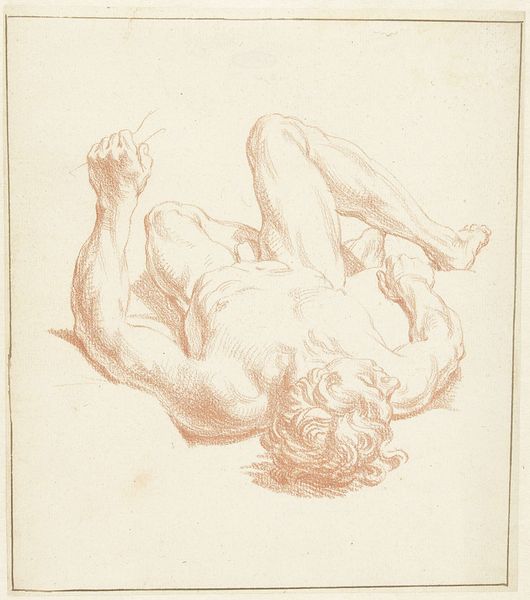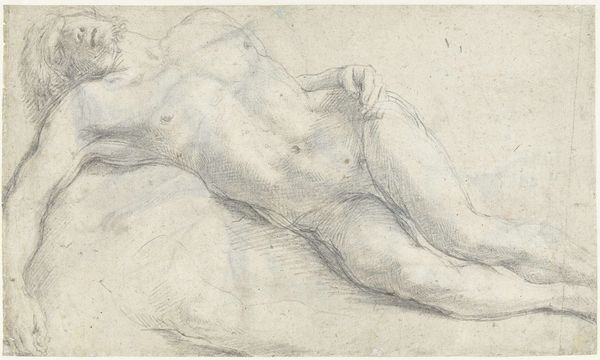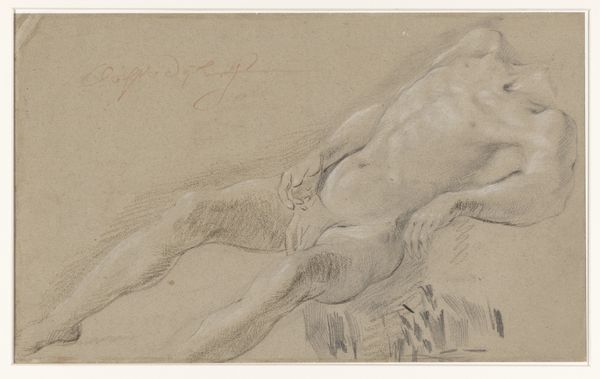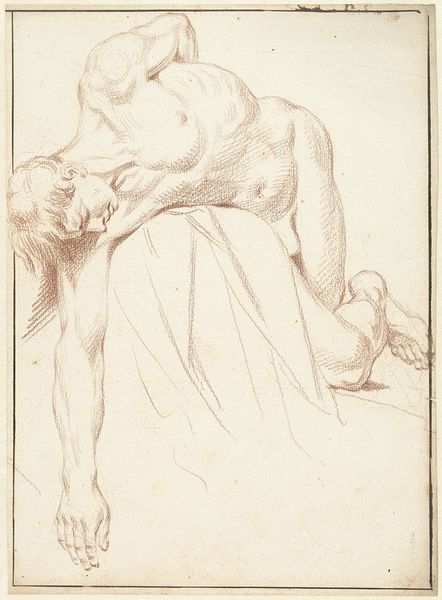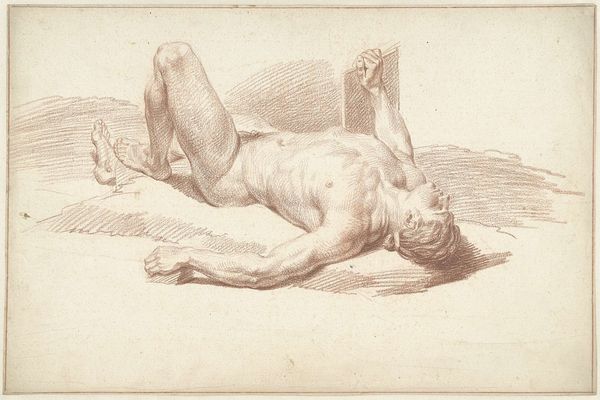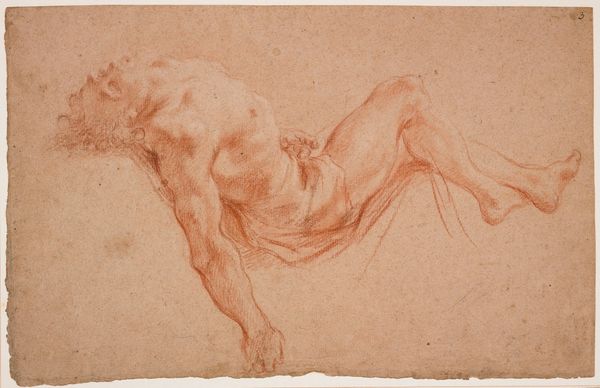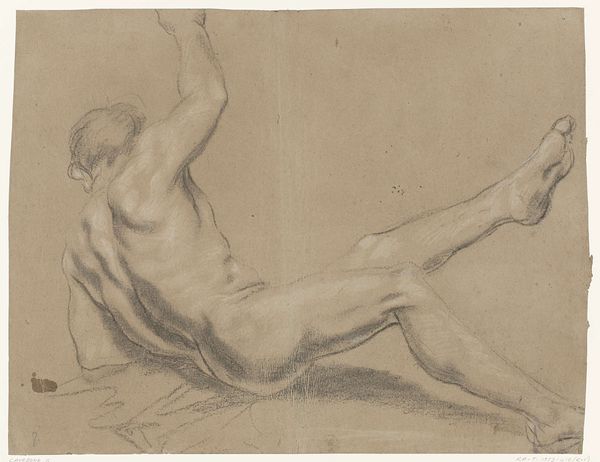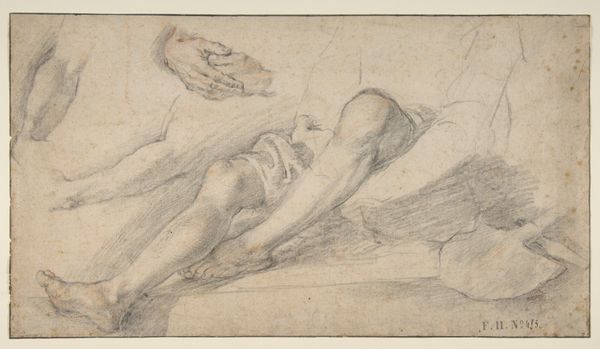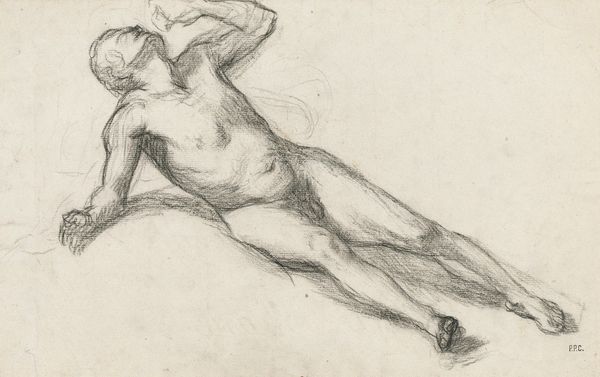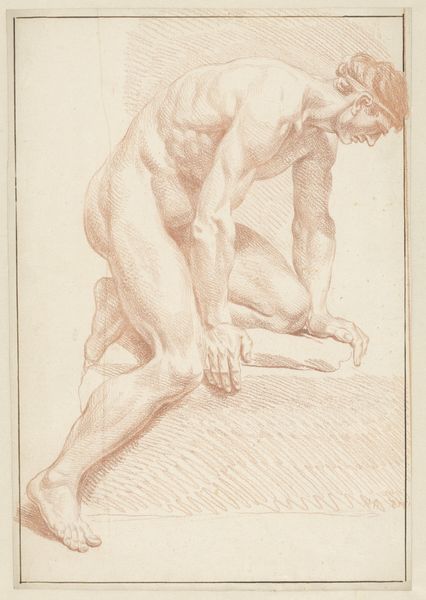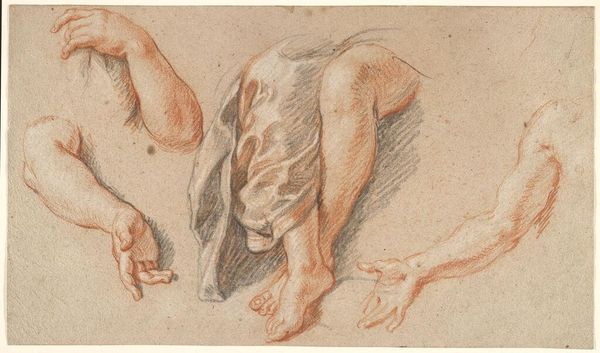
Studie van mannelijk naakt, liggend op de rug, met gestrekt been 1703 - 1775
0:00
0:00
louisfabritiusdubourg
Rijksmuseum
drawing, pencil
#
pencil drawn
#
drawing
#
baroque
#
charcoal drawing
#
pencil drawing
#
pencil
#
portrait drawing
#
academic-art
#
nude
Dimensions: height 205 mm, width 312 mm
Copyright: Rijks Museum: Open Domain
Curator: This drawing, housed here at the Rijksmuseum, is entitled "Study of a Male Nude, Lying on His Back, with Leg Stretched Out," crafted sometime between 1703 and 1775 by Louis Fabritius Dubourg. It's rendered in pencil. What strikes you most about it? Editor: It has a rather melancholic air, wouldn't you say? The way the figure is sprawled out, almost defeated. There’s a stillness that suggests contemplation or even surrender. Curator: Indeed. Dubourg was likely working within the academic tradition. These studies of the nude male form were crucial for artists, focusing on anatomical accuracy and the mastery of classical ideals. Such artworks allowed a display of their understanding of form. Editor: It's fascinating how the seemingly simple pose is actually full of symbolism. The reclined figure can represent vulnerability, introspection, even death in certain contexts. There's a clear allusion to classical sculpture that Dubourg seemed very conscious of. Curator: Absolutely, and this kind of study was considered foundational within art academies. Mastering the depiction of the nude was paramount in demonstrating skill and understanding of human anatomy – not to mention fitting with social codes around the display of the male figure. It served a clear didactic purpose, teaching and reinforcing artistic norms. Editor: Yet, there's an undeniable erotic charge too, stemming from classical traditions, that one can't fully dismiss either. Though it's a study, the inherent beauty and idealized form are undeniably appealing, playing into deeper human fascination with the body and mortality. I see both Eros and Thanatos intertwined here. Curator: The question is, who was allowed to look, and for what reasons? Its status as a pedagogical artwork permitted exploration of male nudity. Public responses would certainly have differed wildly to the kind of readings you're alluding to depending on class and social standing. Editor: And that's the beauty of such a seemingly simple image; so much is held in suspension, awaiting the viewer to unlock its cultural echoes and human drama. A seemingly tranquil surface with potent undercurrents. Curator: Precisely, highlighting how these "academic exercises" were just as involved with cultural messaging and norms as finished commissions. Editor: It’s been fascinating to look beyond the obvious anatomical mastery and touch on some possible alternative meanings woven in Dubourg's piece.
Comments
No comments
Be the first to comment and join the conversation on the ultimate creative platform.
